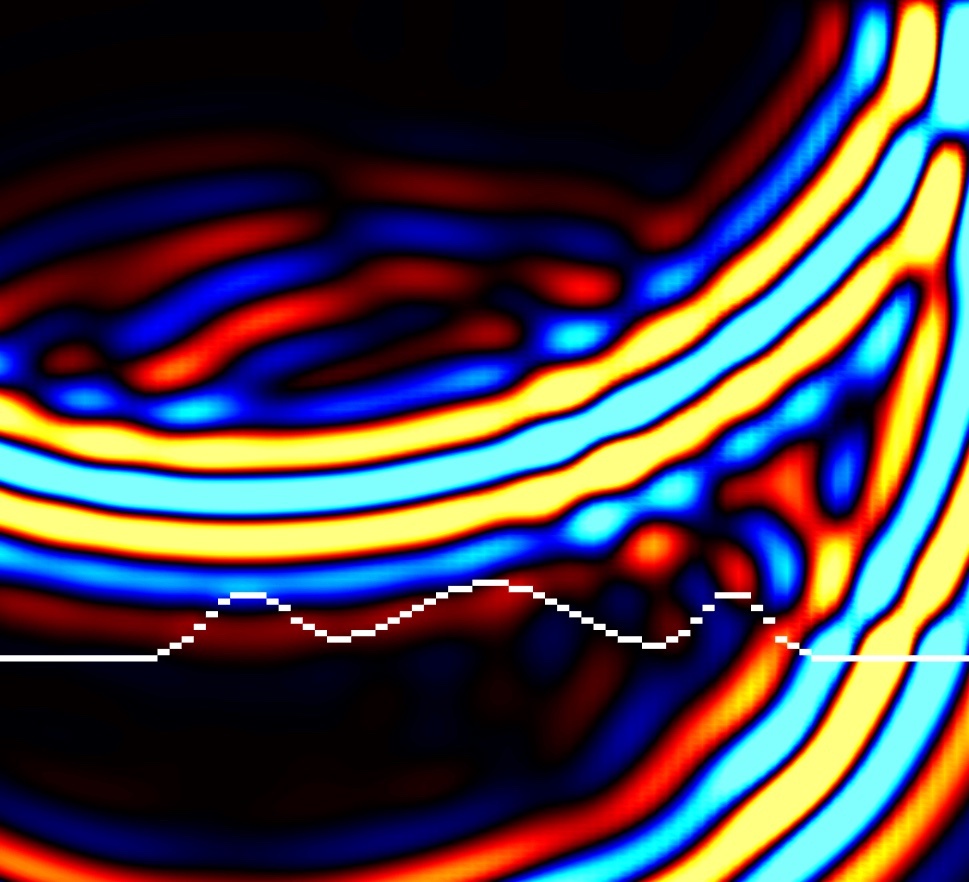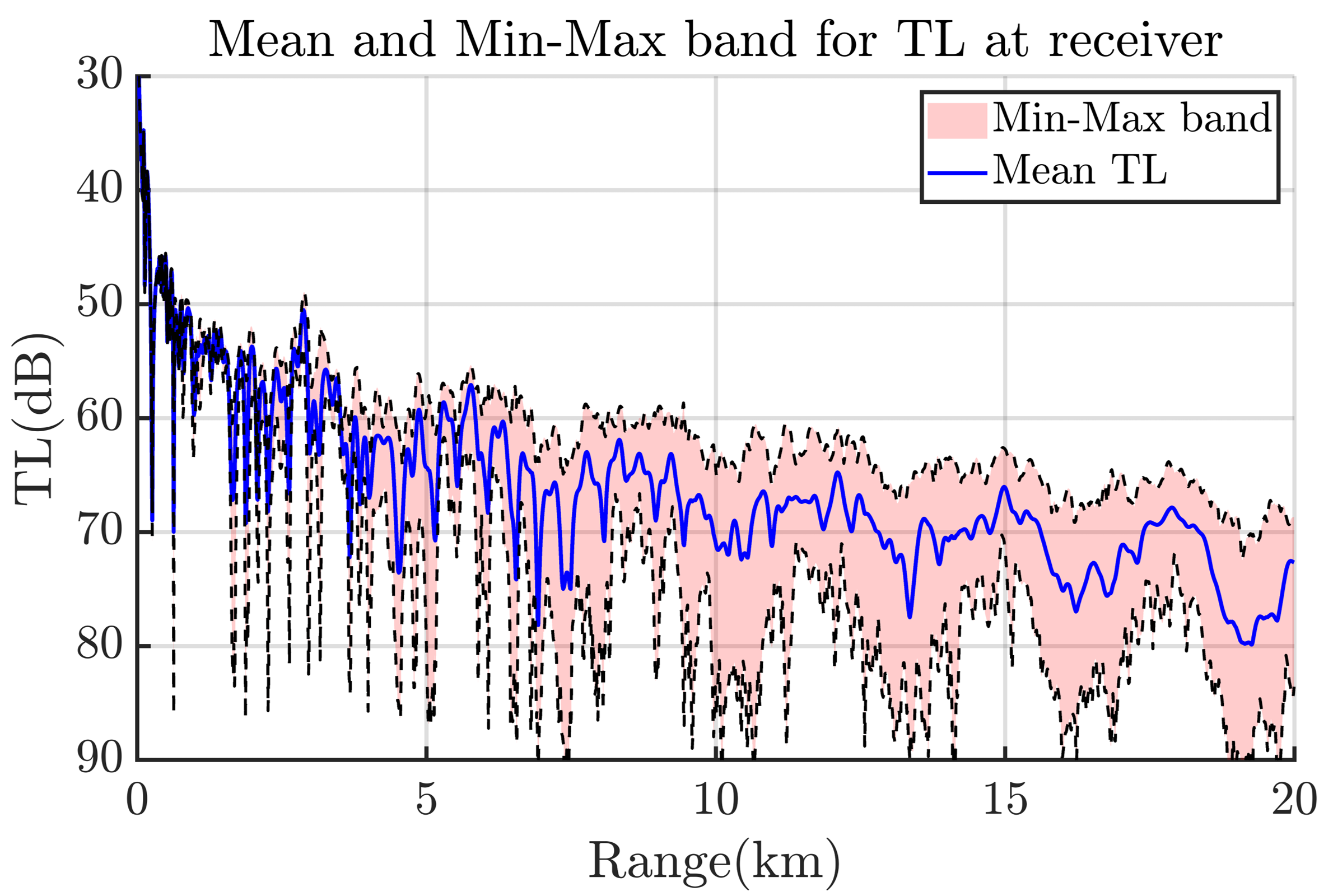Dynamic Environmental Estimation, Prediction, and Acoustic Inference (DEEP-AI)
|
P.F.J. Lermusiaux, W.H. Ali, A. Charous, M.S. Bhabra, M. Humara, P.J. Haley, Jr., C. Mirabito Massachusetts Institute of Technology
|
Project Summary Ongoing MIT-MSEAS Research Additional DEEP-AI Links Presentations and Meetings MSEAS DEEP-AI-supported Publications Background Information
|

|

|
| This research is sponsored by the Office of Naval Research as part of the Task Force Ocean (TFO). | |||
Project Summary
The main MIT-MSEAS goal for our project is to further develop, implement, apply, and validate theory, algorithms, and computational schemes for dynamic environmental estimation, prediction, and acoustic inference (DEEP-AI). The specific MIT-MSEAS research thrusts are to: (i) Predict and characterize underwater sound propagation PDFs due to the uncertain ocean oceanographic, bathymetry, and seabed fields, (ii) Assimilate the sparse acoustic and oceanographic data using multivariate principled Bayesian inversion and estimation of ocean oceanographic, acoustic, bathymetry, and seabed fields, (iii) Learn and discover acoustic parameterizations, model improvements, new processes, and most informative observation needs using new deep machine learning and Bayesian learning, and (iv) Develop efficient computational methods for the above prediction, assimilation, and learning.
Our DEEP-AI project is part of the U.S. Navy Task Force Ocean. Task Force Ocean (TFO) was established in 2017 to advance Navy-relevant ocean science through strengthened partnerships with academia and the private sector.
Background information is available below.
| Top of page |
Ongoing MIT-MSEAS Research
Specific Objectives:
- Derive, develop, and utilize new coupled oceanographic-acoustic-bathymetry-seabed probabilistic modeling based on optimally reduced DO differential equations for the stochastic representation of 2D/3D oceanographic-acoustic-bathymetry-seabed fields
- Formulate new high-order hybridizable finite-element schemes, super-accurate composition algorithms, and level-set methods for underwater sound propagation, allowing seamless transition among acoustic propagation regimes
- Advance and employ our coupled Bayesian GMM-DO filter and smoother for the joint dynamic inversion of ocean physics-acoustics-bathymetry-seabed fields
- Obtain and utilize next-generation data-driven Bayesian and robust deep learning schemes for evaluating acoustic models and for their integration
- Derive theory and schemes based on Bayesian mutual information fields to quantify ocean acoustic predictabilities and to predict optimal acoustic data types and placements of passive and active sensing platforms that maximize information about naval quantities of interest
- Develop a set of test cases for probabilistic oceanographic-acoustic-bathymetry-seabed modeling and joint multivariate Bayesian field and parameter inversion and machine learning
Presentations and Meetings
- We presented our preliminary work at the Task Force Ocean Research Program Kickoff Meeting on January 9–10, 2020 in Austin, TX.
- We also presented our most recent work at the Task Force Ocean Program Review Virtual Teleconference on January 7–14, 2021.
MSEAS DEEP-AI-supported Publications
| Top of page |
Additional DEEP-AI Links
| Top of page |
Background Information
Our research builds on years of experience in multidisciplinary fields. The MSEAS software (MSEAS Group, 2010, Haley et al., 2015) has been used for fundamental research and for simulations and forecasts of fields and uncertainties in many regions of the world's ocean (Lermusiaux et al., 2006; Leslie et al, 2008; Onken et al, 2003, 2008; Haley et al, 2009; Ramp et al., 2011; Gangopadhyay et al., 2011; Colin et al., 2013; Kelly and Lermusiaux, 2016; Lermusiaux et al., 2011, 2017a,b). Applications include: ocean monitoring (Lermusiaux et al., 2007); real-time acoustic predictions (Xu et al., 2008; Lam et al., 2009; Lermusiaux et al., 2010; Duda et al., 2011); biogeochemical-ecosystem predictions and environmental management (Besiktepe et al., 2003; Cossarini et al., 2009; Coulin et al., 2017); relocatable rapid response (e.g. Rixen et al., 2012; De Dominicis et al., 2014); planning for underwater vehicles (Schofield et al., 2010; Lolla et al., 2014a,b; Lermusiaux et al., 2016); and, adaptive sampling (Lermusiaux, 2007; Heaney et al.,2007, 2016). MSEAS has been validated in a wide range of real-time forecasting exercises. They include: AWACS and SW-06 (Haley and Lermusiaux, 2010; Colin et al., 2013); AOSN-II and MB-06 (Lermusiaux et al., 2006, Gangopadhyay et al., 2011; Ramp et al., 2011); QPE-08 and -09 (Lermusiaux et al., 2010; Gawarkiewicz et al., 2011; Lermusiaux et al., 2019); PhilEx-08 and -09 (Agarwal and Lermusiaux, 2011; Lermusiaux et al., 2011); and NASCar and FLEAT (Lermusiaux et al., 2017a,b; Pan et al., 2018). Recent exercises include Lagrangian transport studies for NSF-ALPHA and probabilistic ocean forecasting for 3D underwater positioning (DARPA-POINT).
| Top of page |


